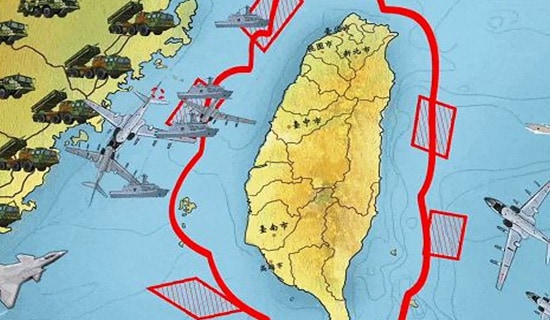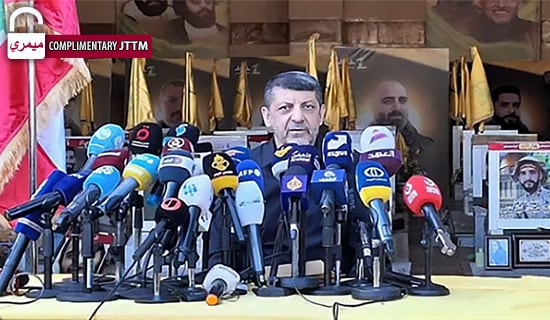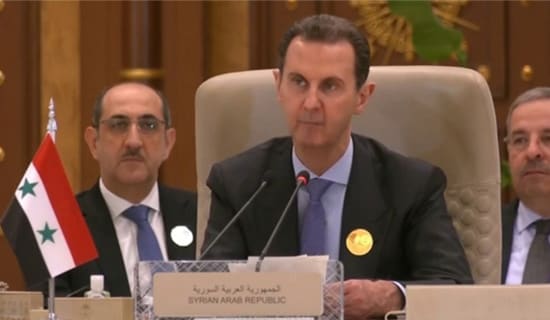On October 16, 2024, Beijing said that it would never promise to renounce the use of force against Taiwan.[1] This was said after the People's Liberation Army (PLA) launched large-scale military exercises around Taiwan, on October 14.
It is worth noting that, on October 15, Chinese President Xi Jinping visited Fujian Province, which is just across a strait from Taiwan. He first went to Dongshan Island to investigate and talk about Cross-Strait integration. Although Xi did not explicitly mention Taiwan, the timing and the places he visited showed his intention to send a strong warning signal to the authorities in Taiwan.
Immediately after, Xi went to Anhui to inspect the PLA Rocket Army and demanded that the training and preparations be comprehensively strengthened to safeguard the national strategic security and core interests. These two sections of his inspection trip sent signals Taiwan and to the United States.
In recent months, since Taiwanese President Lai Ching-te took office on May 20, the situation in the Taiwan Strait has been volatile and eventful. Especially after Lai's ROC National Day speech on October 10, indicating that he would continue to hollow out the ROC Constitution and adhere to the attitude of "Two Chinas," Beijing is increasingly losing patience with Taiwanese President Lai Ching-te.
According to the timeline, we can analyze and judge Xi's strategic intentions in the Taiwan Strait from the four major events that have happened recently.
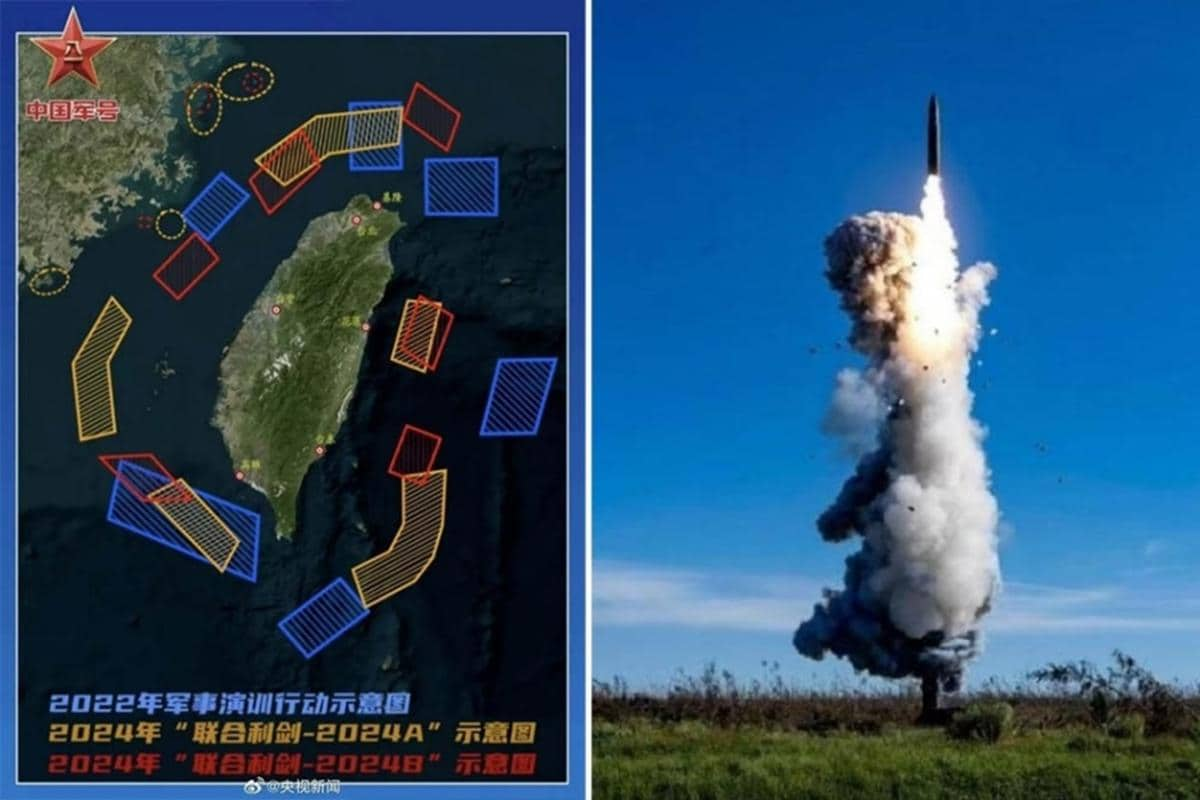
(Source: Weibo)

On October 14, 2024, the CCP mouthpiece Global Times wrote on its X account: "A Chinese expert said the drills aim to prevent 'Taiwan independence' separatists from fleeing via maritime routes when the PLA enforces comprehensive control over the island, as well as to stop individuals posing as civilians from secretly infiltrating the island by sea." (Source: @globaltimesnews)
I. PLA Eastern Theater Command Launched 'Joint Sword-2024B' Military Exercise Without Warning
On October 14, the Chinese Coast Guard dispatched four coast guard formations to cruise and control the waters around Taiwan island, launched joint operations, practiced encircling and blockading Taiwan, cut off the resource import line on which Taiwan relies for survival, and cut off the escape route of the Taiwan Independence leaders. In other words, it is unprecedented for Xi to treat Taiwan and its surrounding waters as China's internal waters, governed by what Beijing calls the "one China principle."
It should be said that this military exercise and coast guard patrol are not just in response to Lai Ching-te's October 10 speech,[2] but in response to Lai Ching-te's inauguration speech in May this year and a series of comments since.[3]
According to the Chinese military report, the various services and arms jointly carried out a sea and air combat readiness patrol, sealing and controlling important ports and areas, striking sea and land targets, and seizing comprehensive control of the battlefields and other subjects. The purpose of "sealing and controlling important ports and important areas" is to cut off the lifeline of Taiwan's economic and military foreign aid, and make Taiwan surrender without a fight.
A PLA expert further said: "For the first time, [the drills] put forward the 'sealing and controlling important ports and important areas,' and the naval forces cooperated with the coast guard forces at the same time to seal and control the relevant sea and airspace, block the important ports and airport airspace of Taiwan, and could at any time board and seize the ships transporting the weapons sold by the United States to Taiwan, as well as oil, gas and other energy transport ships to prevent non-regional countries from possible assistance to Taiwan. It can be said that this 'Joint Sword-2024B' is the first time that we have put the option of 'blocking Taiwan' on the table, sending a new signal to Taiwan Independence forces and those outside the region who are trying to provoke the situation in Taiwan Strait."[4]
The clarity, pertinence, and harshness of these signals from China are unprecedented.
I have long argued that with Beijing's overwhelming military superiority over Taipei, it can engage in either a hot war or a cold war. A cold war is about encircling Taiwan, not fighting it, leaving it without foreign aid and cutting off the retreat route of Taiwan's leaders, which was both the model of the Communist army's capture of Peiping (today's Beijing) and the strategy adopted by the Kangxi emperor to seize Taiwan.[5]
At the same time, the Beijing authorities continue to increase the frequency of military exercises to blockade Taiwan according to the evolution of the situation, which also reflects the opinion held in the analysis article I wrote after the visit of the then Speaker of the U.S. House of Representatives Nancy Pelosi to Taiwan in August 2022: "Pelosi's visit also gave Xi Jinping an excuse to break the status quo, establish the so-called 'new normal,' and use a reversed version of the strategy of 'salami cutting' to start the process of unifying Taiwan by force."[6]
Beijing will from now on adopt "a tooth for a tooth." In response to the DPP authorities' gradually changing the political ecosystem of Taiwan, making the people there gradually move away from the mainland China, promoting this sausage-slicing style Taiwan Independence, Xi Jinping started a reciprocal reverse sausage-slicing mode, that is, according to the actions of the Taiwan authorities, step by step, constantly and regularly squeezing on Taiwan militarily, and finally completely eliminate Taiwan Independence forces.
Another noteworthy message is that the Chinese military said after the military exercise that future military exercises could be turned into actual combat at any time depending on the specific situation.[7]
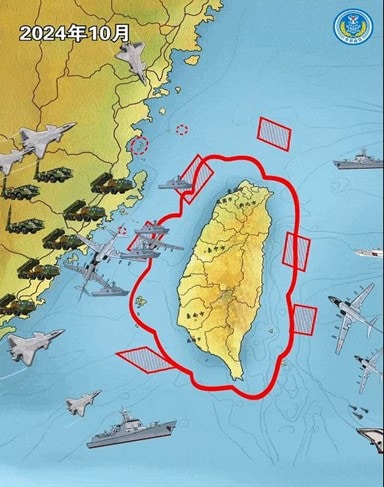
(Source: Kunlunce.com)
II. On September 25, Beijing Launched An Intercontinental Ballistic Nuclear Missile Into The South Pacific
According to the Chinese military, at 8:44 on September 25, the PLA Rocket Force successfully launched an intercontinental ballistic missile carrying a simulated training warhead into the international waters of the Pacific Ocean, which accurately fell into the predetermined waters. The Chinese side notified the relevant countries (most notably the United States) in advance.
According to reports, the DF-31AG (DF-31A modified) missile is China's second-generation intercontinental strategic nuclear missile launched with solid fuel. Some U.S. military experts believe that this is the first time since 1980 that China has launched an intercontinental ballistic missile into the Pacific Ocean, ostensibly for training purposes, but in fact, it is a direct signal to the outside world, especially to the United States and its allies. There are signs that the launch could be the beginning of more regular international missile tests in the future, as Beijing continues to dramatically expand its nuclear arsenal and the size of its intercontinental ballistic missiles.
On May 18, 1980, China's first "DF-5" intercontinental ballistic missile (known at the time as a "carrier rocket") was launched from Jiuquan, Gansu Province, to the designated sea area in the South Pacific, flying a full distance of more than 9,000 kilometers. For the first time in 44 years, the launch of the DF-31AG was a full-range test, which is of great significance.
To some extent, if a certain type of strategic missile does not complete the full-range launch test, basically it does not have the real combat readiness duty function. It can be said that this rare and significant strategic missile test is the beginning of China's strengthening of its nuclear deterrence and nuclear counterattack capabilities in the true sense.
Why did China choose to conduct a full-range ICBM test into the Pacific? If there is any event that makes Beijing feel that the crisis is so urgent that it must be used to warn or deter its adversaries, it is the Taiwan issue. As Resolution 2758, adopted by the United Nations General Assembly in 1971, is being challenged as never before, the United States accuses Beijing of distorting the General Assembly resolution and using it as a tool to undermine Taiwan's status and participation in the international community, including blocking Taiwan's participation in relevant United Nations bodies.
The issue is now at the center of a major political divide between China and the United States over how to define Cross-Strait relations. When political and diplomatic means are difficult to achieve the goal, and war means cannot be adopted immediately, China's launching of intercontinental ballistic missiles into the Pacific Ocean has become the only option to deter powerful enemies.
Beijing's full-range ICBM test demonstrates China's ability to launch a long-range strike on a global scale. Especially at a time of international tension, it sends a clear signal to the outside world that China has the strength and determination to ensure its national sovereignty and territorial integrity. This launch test is not only a confirmation of the technical level of the missile system, but also a deterrent and challenge to China's enemies' defense systems, in order to ensure that China has a credible nuclear counterattack capability on a global scale.[8]
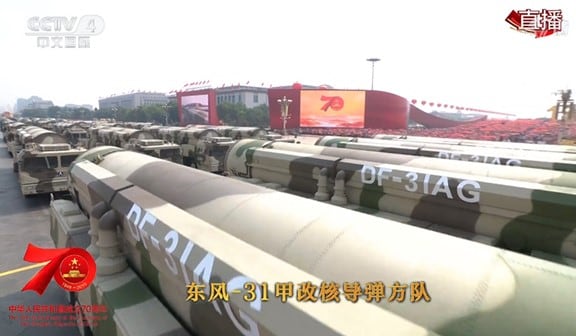
The Dongfeng-31AG intercontinental strategic nuclear missile made its debut at the National Day military parade in 2019. (Source: CCTV footage)
III. Xi Hopes To Emulate Kangxi Emperor And Conquer Taiwan Without A Fight
The latest series of events in the Cross-Strait situation may show that Beijing is now strengthening its readiness to solve the Taiwan problem and seize the island. On September 25, PLA launched a nuclear missile into the South Pacific, as Beijing wants to achieve nuclear parity and balance with the United States. It wants to show strength to the U.S., to deter the U.S. from supporting Taiwan's DPP authorities, and reduce the possibility of armed intervention by the United States once Beijing uses force against Taiwan.
I have always emphasized that Beijing will first consider the option of blockading Taiwan, destroying its economy, and thus breaking down the resistance of its people. This is basically the strategy of the Kangxi Emperor of the Qing Dynasty to seize Taiwan,[9] and it is also the practice consistently advocated by Chinese military strategic thoughts such as Sun Tzu's Art of War, that is, "subdue the army without fighting." It is clear that a direct military offensive is too costly, and there are many unpredictable variables. This is something Xi Jinping wants to avoid as much as possible.
I believe that Beijing will, at a right critical moment, rely on its overwhelming military power to encircle and blockade Taiwan, cut it off from the outside world, and possibly conduct local precision strikes to show the strength of the PLA, while activating the political and business agents that the CCP has trained in Taiwan through the CCP's United Front work over the years. Beijing hopes to break the resistance of the Taiwanese people by realizing the cooperation of the forces inside and outside the island.
The only difference between the Kangxi Emperor's seizure of Taiwan and Beijing's solution to the Taiwan problem now is that there is the possibility of military, political, and economic intervention by the United States. Therefore, for many years, Beijing authorities have vigorously developed armaments on the one hand, to deter military intervention by the United States, on the other hand, to narrow the gap with the West through economic development. In recent years, they have focused on building a domestic economic cycle in order to reduce economic dependence on the outside world, so that in an emergency, it can resist the economic sanctions and decoupling of the United States and the West. These measures are to wait for the right time to seize Taiwan.
It is worth noting that, on August 23, 2024, a commentary by China Review News Agency bluntly stated: "Taiwan has greatly increased its military spending, but the gap in military power between the two sides of the strait remains huge; Lai Ching-te claims that he will use force to achieve peace and stability in the Taiwan Strait, but this is just to embolden himself; the passage of U.S. warships through the Taiwan Strait is bad in nature, but it does not pose a real and effective threat. The U.S. and Taiwan are colluding and resisting reunification by force, and no matter how many actions they take, they cannot change the general trend. As Defense Minister Dong Jun pointed out at the Shangri-La Dialogue in Singapore in early June, the mainland is very well prepared for any extreme scenarios and situations of 'Taiwan independence' and is also capable of dealing with 'Taiwan independence' armed forces. Dealing with them is like 'catching turtles in a jar,' which is not worth mentioning."
IV. Beijing Begins To Prepare For The Takeover And Governance Of Taiwan After Seizing The Island
The Xiamen University Cross-Strait Institute of Urban Planning, a CCP think tank, wrote on August 5 that as the possibility of Trump winning the election increases, the timetable for unifying Taiwan may be advanced at any time, and the (CCP) Central Taiwan Work Committee and the Taiwan Governance Experimental Zone should be established as soon as possible.
The CCP think tank's article points out that the only goal of establishing the Central Taiwan Work Committee is to act as a "shadow government" to enter Taiwan at any time to take over the other side of the strait and be familiar with Taiwan's current system, institutions, and laws. Because Taiwan is a more developed economy, many problems have not been encountered by the mainland, so they need to be dealt with.
The article also suggests "gathering anti-Taiwan independence forces on the island" and says that the reason why the CCP's "military exercises around Taiwan" had little impact on public sentiment is because the people of Taiwan believe "reunification" is still very far away. But if preparations for the actual takeover of power begin, this action itself will have a significant impact on public sentiment on the island.
The article further points out that a pilot area for Taiwan governance should be established as soon as possible, and retired Taiwanese military, civil servants, and educators should be introduced to assist in formulating the details of the policies after the CCP takes over Taiwan, so as to shorten the transition period with the greatest risk of regime change. It then lists in detail the issues that need to be solved after taking over Taiwan, including major matters such as abolition or retention of the electoral system, to smaller matters like the retention or elimination of traditional Chinese characters; from more distant matters such as the transition of the currency to more immediate matters such as the transition of teaching materials and teachers.
It also seems that the article hints to the fact that the unrest in Hong Kong show that if there is no contingency plan for the transfer of power, it will have serious consequences for the smooth transfer of social order in the future. Since Taiwan does not have the problem of "50 years of no change" in its capitalist system, once the mainland takes over, its depth and breadth will be far greater than the takeover of Hong Kong in 1997. Hence, the article stresses the urgent need to plan for the comprehensive takeover of Taiwan after reunification.[10]
Some commentators in Taiwan and in the United States believe that this article is just a show by the Beijing authorities, but I think it is just the opposite. This is the practice that the Chinese Communist regime has always adopted to create public opinion before doing big things. It reveals that the Xi Jinping authorities have never stopped their preparations to seize Taiwan.[11]
Conclusion
Observing the trend of the recent Cross-Strait situation, it is not difficult to see that Beijing is gradually implementing its deployment of the seizure of Taiwan in the military, political, economic, and other fields. The future of Taiwan will depend on the game between the United States and China.
The situation on the Korean Peninsula has become tense recently, with South Korea and North Korea on the verge of a war, and North Korea even threatening to use nuclear weapons against South Korea. As Xi recently mentioned to President Joe Biden, China does not want to "allow conflict and turmoil to happen on the Korean Peninsula."[12] Beijing does not want to see repeating the scenario of the early 1950s, when North Korea invaded South Korea and the Korean War broke out, since the United States changed its policy of abandoning Taiwan and sent a fleet into the Taiwan Strait to defend Taiwan, thus delaying the opportunity for the Chinese Communist Army to "liberate" Taiwan.
The reason why the Beijing authorities are so angry with Taiwanese President Lai Ching-te is that Xi Jinping believes that if Lai Ching-te continues to promote Taiwan independence and causes a substantial shift in the Taiwan regime, it may force him to take action in advance, which may disrupt the rhythm of his preparations and deployments to seize Taiwan and stabilize the domestic situation, and even create a passive situation where he has to take military action hastily, thus putting the ruling status of the CCP regime in danger.
This is precisely why Xi Jinping has taken the initiative to continuously hold military exercises and warn Taiwan's leaders not to take risks.
*Chris King is Senior Research Fellow for the MEMRI Chinese Media Studies Project.
[1] Voachinese.com/a/china-taiwan-xi-jinping-/7824131.html, October 16, 2024.
It is worth noting that, on November 16, 2024, Chinese President Xi Jinping met with U.S. President Joe Biden in Lima. Xi stressed: "Cross-Strait peace and stability and 'Taiwan independence' separatist activities are irreconcilable as water and fire. If the U.S side cares about maintaining peace across the Taiwan Strait, it is crucial that it sees clearly the true nature of Lai Ching-te and the DPP authorities in seeking 'Taiwan independence,' handles the Taiwan question with extra prudence, unequivocally opposes 'Taiwan independence,' and supports China's peaceful reunification." Fmprc.gov.cn/eng/xw/zyxw/202411/t20241117_11527672.html, November 17, 2024.
[2] Upmedia.mg/news_info.php?Type=2&SerialNo=214091, October 15, 2024.
[3] Rfa.org/mandarin/yataibaodao/gangtai/tj-china-military-drill-circumscribe-taiwan-10142024112743.html, October 14, 2024.
[4] Finance.sina.com.cn/roll/2024-10-14/doc-incsnyyv5344482.shtml?cref=cj, October 14, 2024.
[5] See MEMRI Daily Brief No. 336, In His Quest To Seize Taiwan, Chinese President Xi May Apply The Strategy Of 17th-Century Emperor Kangxi, By Chris King, November 8, 2021.
[6] See MEMRI Special Dispatch No. 11375, All Eyes On Taiwan, June 4, 2024.
[7] Kunlunce.com/klzt/ximahui/2024-10-17/181831.html, October 17, 2024.
[8] Rfa.org/mandarin/zhuanlan/junshiwujinqu/mil-strategic-intimidation-df31ag-launch10022024134414.html, October 2, 2024.
[9] See MEMRI Daily Brief No. 336, In His Quest To Seize Taiwan, Chinese President Xi May Apply The Strategy Of 17th-Century Emperor Kangxi, By Chris King, November 8, 2021.
[10] Interpret.csis.org/translations/start-taiwan-takeover-preparations-as-soon-as-possible/, August 5, 2024.
[11] Rfa.org/mandarin/yataibaodao/gangtai/hx1-china-researchers-call-shadow-government-taiwan-08192024070532.html/ampRFA, August 19, 2024.
[12] On November 16, 2024, Chinese President Xi Jinping met with U.S. President Joe Biden in Lima. Xi stressed: "China does not allow conflict and turmoil to happen on the Korean Peninsula. It will not sit idly by when its strategic security and core interests are under threat." It seems that Xi is sending a warning to the two Koreas and the United States, but it is actually a warning to North Korea's untamed dictator Kim Jong Un in light of the changing situation. It is worth noting that, on November 16, 2024, Xi just met with the South Korean president Yoon Suk-yeol, and the atmosphere of the talks was very good. Xi Jinping called on China and South Korea to promote a sound and steady development of the strategic cooperative partnership between the two countries. (Shine.cn/news/world/2411168834/, November 16, 2024)


